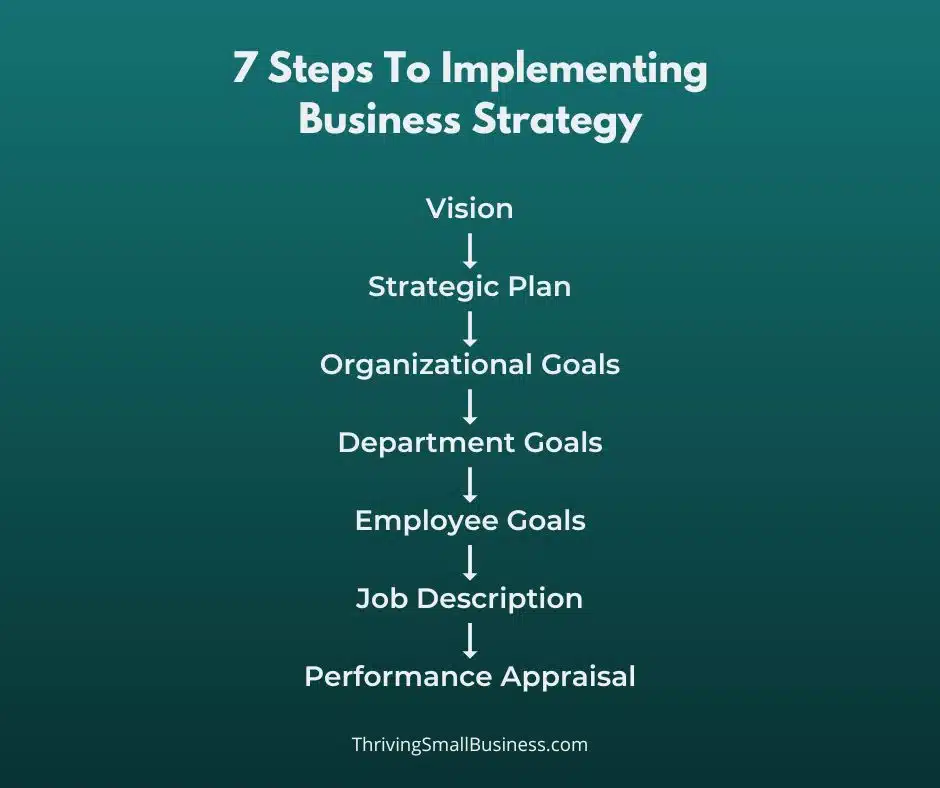7 Steps to Implementing Business Strategy
Estimated reading time: 3 minutes
Business success is the result of strategy, planning, and management skills.
Every business should have a strategy and a plan.
However, a strategic plan is only as effective as the supporting goals that are written to implement it.
And goals are only as effective as the people who have responsibility for completing them.
I am a visual person, so I created a picture of the different steps required to implement a business strategy.

7 Steps to Implementing Business Strategy
1. Mission, Vision and Values
The first step for any business strategy is writing a mission, vision, and values statement.
This important step clarifies what the organization is about and what it is trying to achieve.
It also determines the values and guiding principles that are used to make business decisions.
Without clarity and articulation of vision, organizations are at risk of distraction and steering off course.
2. Strategic Plan
Once the mission, vision, and values are written, a strategic plan can be created.
The plan identifies the steps needed to achieve the organization’s mission.
Strategic plans can be written as long-term (1-3 years) or short-term (3-6 months).

It used to be that strategic plans were written as far out as ten or even twenty years.
However, because of the rapidly changing market conditions, shorter-term plans seem more common today.
3. Organizational Goals
Business goals are written at the organizational level and involve high-level goals that the organization aims to accomplish.
Goals at this level are typically what a CEO or executive-level manager is accountable for to the board or other governing body.
4. Departmental Goals
Once organizational goals are written, these key objectives should be delegated to the next level of management.
This is where the chain of command disseminates responsibilities throughout the organization.
As a CEO has accountability for achieving organizational goals, his/her direct reports share the responsibility and employees help a department manager achieve departmental goals.
5. Employee Goals
Departmental goals should be used to create employee goals so there is a shared responsibility for getting things done.
The more people who have accountability for achieving goals, the more streamlined the implementation becomes.
6. Job Description
An employee’s job description should include their goals and should be updated annually to reflect goal responsibilities.
This ensures accountability for goal completion as well as job description accuracy.
Another benefit of updating annually is it ensures employees are spending their time on tasks that help with global strategy.
7. Performance Appraisals
A well-structured performance management process incorporates annual goals into the employee appraisal.
Holding employees accountable at performance evaluation time ensures targeted employee performance and goal completion.
Organizations that are successful at creating a vision, mission, and values statement and developing a strategic plan that drives goals throughout the organization not only experience success in implementing the plan but also engage employees because they can see how what they do supports the organization’s mission.
Do you have a plan to implement your strategy?






